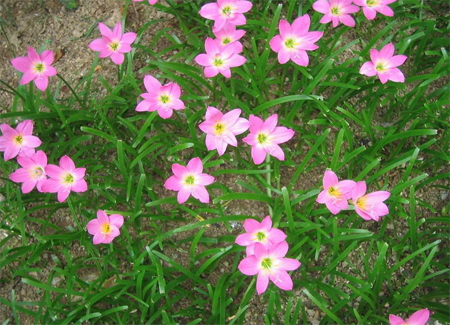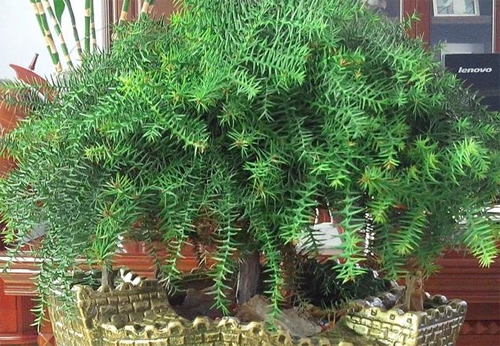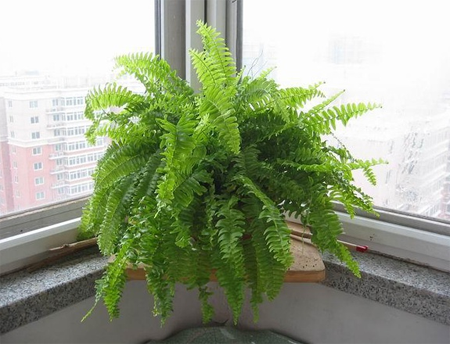The propagation method of Chinese chive orchid and the difference between flowering stage and onion orchid
Leek orchid is very good-looking, vitality is also very tenacious, whether in dry places or relatively humid places are able to grow, what is the breeding method of leek orchid? When will it bloom? what's the difference between onion orchid and onion orchid?

The propagation method of Chinese chive orchid:
To reproduce by separating bulbs or sowing.
Like to moisten fertile and well-drained soil.
It can be planted by split plant or bulb.
It can be carried out all year round, but it is the best in spring. As long as the root of the ball is dug up, 3-5 balls are planted in each place and watered to maintain proper humidity, it is very easy to survive. When digging up the bulbs, be careful not to hurt them. If there are too many leaves and flower stems, cut off the upper part and keep the complete bulb and 6-8 cm leaves for planting. If the bulb has germinated buds and fully watered after branching, it can still blossom.
The method of dividing balls can be carried out in spring and autumn.
The planting depth is slightly exposed at the top of the bulb, and the bulb is divided once every 2 to 3 years. Potted plants should have plenty of sunshine and fat water. After a batch of flowers fade, the water should be controlled for 50 days and 60 days, and then the normal water supply should be restored. Such alternation of dry and wet can promote multiple flowering, which can blossom 2 or 3 times a year.
The florescence of leek orchid:
Like warm, moist, sunny, but also resistant to semi-overcast. It is suitable for sandy loam with good drainage and rich humus. The florescence is from June to September.
Distribution area of leek orchid:
Native to Central and South America, it is transplanted to tropical and subtropical regions and propagates with seeds, but it is customary to transplant bulbs.
The difference between leek orchid and onion orchid:
Green onion orchid leaves are round, upright and not easy to bend or lodge, while leek orchid leaves are flat, wider and easier to bend or lodge.
But flowers, green orchid flowers are generally white, chive orchid flowers are generally pink, leek orchid flowers are slightly larger than green orchid flowers.
Leek orchid on the left and onion orchid on the right
The breeding method and pest control of Chinese chive orchid, the difference between it and onion orchid
Leek orchid is large in shape, pink, petals slightly curved; small leek orchid is thick peach red, adult each bulb can blossom, clump of flowers, brilliant in the sun, charming, loved by everyone. What is the breeding method of leek orchid? What are the methods of its diseases and insect pests? Come and learn from the editor.
Reproductive methods and pest control
It can be planted by split plant or bulb, which can be carried out all the year round, but it is the best in spring. As long as the root of the ball is dug up, 5 balls are planted in each place, and the watering is kept properly.
The humidity is very easy to survive. When digging up the bulbs, be careful not to hurt them. If there are too many leaves and flower stems, cut off the upper part and leave the complete bulb and 6Mel 8cm leaves for planting. If the bulb has germinated buds and fully watered after branching, it can still blossom. [6]
The seeds of Chinese chives usually mature from September to October. Because of its long flowering period, the time for seed collection is not concentrated. Pay attention to observe that when the pericarp changes from green to black, select full and full seeds to be harvested in time, otherwise the fruit will crack and it will not be easy to collect once it falls off. After the fruit is collected, it should be dried in time, and after the peel is cracked, it should be threshed in time, and the pure seeds can be obtained by removing sundries. Because the cold tolerance of Chinese chive is slightly poor, it should be sown in spring.
Preservation of seeds: as the seeds of leek orchid are relatively small and have low water content, after fully drying, the seeds to be processed can be stored in Kraft paper bags to prevent mildew and rot.
Diseases include leaf rust and spot disease; insect pests include grubs. Small leek orchid has strong resistance to diseases and insect pests. When the disease occurs, the whole plant can be sprayed with 1RU 3000 methyl topiramate, and the underground pests can use phoxim to irrigate the plant.
The difference between green onion orchid and leek orchid
(1) Leaf
Green onion orchid leaves are round, erect and not easy to bend or lodge; leek orchid leaves are flat, wider, easier to bend or lodge.
(2) flowers
The flowers of onion orchid are generally white, the flowers of leek orchid are usually pink, and the flowers of leek orchid are slightly larger than those of onion orchid.
Main categories
Amaryllidaceae, alias leek lotus (Beijing), saffron (Guangxi, Guizhou), daffodil, hollow leek (Guizhou), calamus lotus, red jade curtain, wind and rain flower (North China), red gladiolus lotus (Beijing), plant height is about 15-30 cm. The leaves are linear, very similar to leeks. The flower stem is extracted from the foliage and has 6 petals. The small leek orchid is thick pink, and each bulb can blossom as an adult. Originally from southern Mexico to Guatemala, gardens are introduced and cultivated in the north and south of our country, and are common in Guizhou, Guangxi and Yunnan.
Growth habit
Strong in nature, drought-resistant and high-temperature resistant, easy to cultivate, the suitable temperature for growth is 22-30 degrees, and the fertile sandy loam is the best cultivated soil. Leek orchid likes light, but it is also resistant to semi-overcast. Like a warm environment, but also more hardy. Loam or sandy loam with deep, flat terrain and good drainage. Like to be wet, afraid of flooding. Strong adaptability, strong resistance to diseases and insect pests, corm germination is also strong, easy to reproduce.
That's all I know about Jiulan today. I hope it will be helpful for you to read this article. If you want to know more about Jiulan, please continue to pay attention to the succulent flower bed, we will provide you with more related knowledge!
The culture methods and matters needing attention of Chinese chive orchid teach you how to cultivate Chinese chive orchid
Leek orchid leaves linear, very similar to leek, so it is called leek orchid, clump of flowers, brilliant in the sun, loved by everyone, then do you know the breeding methods and matters needing attention? Let's take a look at the details.
Brief introduction of Jiulan:
Leek orchid, alias: leek lotus, wind and rain flower; Latin name: Zephyranthes grandiflora, is a perennial herb of the genus Allium of Lycoris family.
Bulb ovoid, 2-3 cm in diam. Basal leaves often fascicled, linear, flattened, about 15-30 cm tall, clustered. The leaves are linear, very similar to leeks. The flower stem is drawn from the foliage, and most of the petals are 6, sometimes 8. Leek orchid is large in shape, pink, petals slightly curved; small leek orchid is thick peach red, adult each bulb can blossom, clump of flowers, brilliant in the sun, charming, loved by everyone. The flowering period of leek orchid is from April to September, and the florescence of leek orchid is about May to August in summer. Suitable for garden flower bed edge planting or pot planting.
Culture methods and matters needing attention of leek orchid:
How to raise:
Leek orchid can be planted by split plant or bulb, which can be carried out all the year round, but it is the best in spring. As long as the root of the ball is dug up, 3 or 5 balls are planted in each place and watered to maintain proper humidity, it is very easy to survive. When digging up the bulbs, be careful not to hurt them. If there are too many leaves and flower stems, cut off the upper part and keep the complete bulb and 6-8 cm leaves for planting. If the bulb has germinated buds and fully watered after branching, it can still blossom.
Matters needing attention in the culture of leek orchid:
1. Soil: the soil quality of Chinese chive orchid cultivation is fertile sandy loam, 3-4 bulbs are planted in each hole, and the planting depth is that the top of the bulb is slightly exposed to the soil. When the plants are clustered and crowded, the ramets must be forced.
2. Fertilization: when potted, combined with changing pots, changing soil and applying base fertilizer every year, organic fertilizers such as oil meal, compost or nitrogen, phosphorus and potassium fertilizer can be used once every 2 to 3 months, increasing phosphorus and potassium fertilizer in proportion, which can promote bulb hypertrophy and bloom well.
3. Watering: onion orchids should be watered adequately during the growth period, and it is appropriate to keep the basin soil moist, but not stagnant water. When the weather is dry, water is often sprayed on the leaves to increase air humidity, otherwise the leaf tips are easy to yellow and wither.
4. Temperature: the most suitable growth temperature of leek orchid is 22-30 degrees. After planting, pay attention to irrigation to maintain humidity. When the ambient temperature is below 10 ℃, it can not safely survive the winter when the frost occurs.
5. Light: green onion orchid likes light, but it is also resistant to semi-shade, the cultivation site should have sufficient sunshine, it is not easy to divide the bulbs in the shade, and it is not easy to blossom.
Morphological characteristics of leek orchid:
Perennial herbs. Bulb ovoid, 2-3 cm in diam. Basal leaves often fascicled, linear, flattened, 15-30 cm long and 6-8 mm wide. Flowers solitary at the top of the flower stem, with a flamboyant involucre, involucral bracts often purplish red, 4-5 cm long, proximally connate into a tube; pedicel 2-3 cm long; flowers rosy or pink; perianth tube 1-2.5 cm long, perianth lobes 6, lobes Obovate, tip slightly acute, 3-6 cm long; stamens 6, ca. 2 bank 3-4 pedicel 5 as long as perianth, anthers T-shaped. Ovary inferior, 3-loculed, ovules numerous, style slender, stigma deeply 3-lobed. Capsule subglobose; seeds black. Flowering, summer and autumn. [3]
The height of leek orchid is about 15-30 cm, and the plants are clustered. The leaves are linear, very similar to leeks. The flower stem is drawn from the foliage, and most of the petals are 6, sometimes 8. Leek orchid is large, pink, petals slightly bent, showing a thick peach red, adult plant each bulb can blossom, clump of flowers, brilliant in the sun, charming, everyone loves. The flowering period of leek orchid is from April to September, and the florescence of leek orchid is about May to August in summer. Suitable for garden flower bed edge planting or pot planting. The difference with the common leek orchid: the flower is smaller, the color is darker and more colorful, the petal is stiff, not easy to droop, and the flower pattern can be maintained very well. Leek orchid varieties also vary due to soil changes, such as in the greenhouse in northern China, the leaves are relatively broad and thick, and planted in California, the leaves are narrower and the fragrance is heavier.
The growth habits of leek orchid:
It is strong in nature, resistant to drought and high temperature, easy to cultivate, the suitable temperature for growth is 22-30 degrees Celsius, and the fertile sandy loam is the best cultivated soil. Onion orchids like light, but they can also withstand half-shade. Like a warm environment, but also more hardy. Loam or sandy loam with deep, flat terrain and good drainage. Like to be wet, afraid of flooding. Strong adaptability, strong resistance to diseases and insect pests, corm germination is also strong, easy to reproduce.
- Prev

Propagation methods of Cryptomeria fortunei
Australian fir is an indoor plant that many people like. If you buy one, you still want several more. What is the breeding method of Australian fir? How to water indoors is healthy? The propagation method of Australian fir: Australian fir mainly propagates by seed, but cuttings can also reproduce offspring.
- Next

Can the culture methods and matters needing attention of Boston fern be cultured in water?
Boston fern is very hardy, but prefer humid environment, it is easier to raise, what are the breeding methods and points for attention of Boston fern? Can Boston ferns be hydroponically cultured? Culture methods and precautions of Boston fern: generally placed in an indoor place with bright scattered light
Related
- Fuxing push coffee new agricultural production and marketing class: lack of small-scale processing plants
- Jujube rice field leisure farm deep ploughing Yilan for five years to create a space for organic food and play
- Nongyu Farm-A trial of organic papaya for brave women with advanced technology
- Four points for attention in the prevention and control of diseases and insect pests of edible fungi
- How to add nutrient solution to Edible Fungi
- Is there any good way to control edible fungus mites?
- Open Inoculation Technology of Edible Fungi
- Is there any clever way to use fertilizer for edible fungus in winter?
- What agents are used to kill the pathogens of edible fungi in the mushroom shed?
- Rapid drying of Edible Fungi

